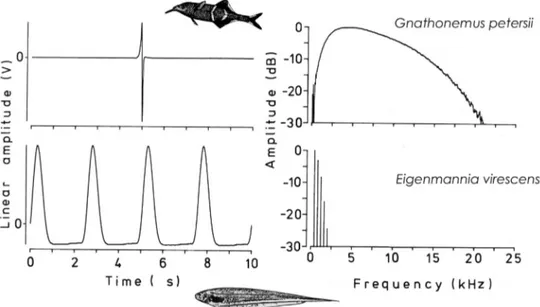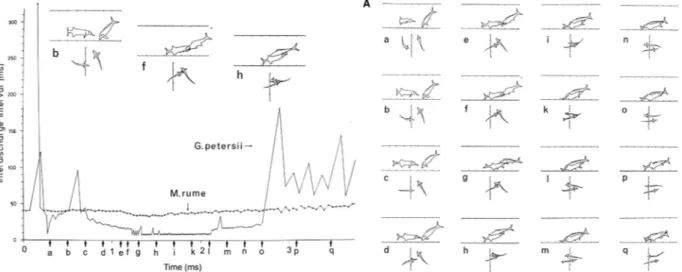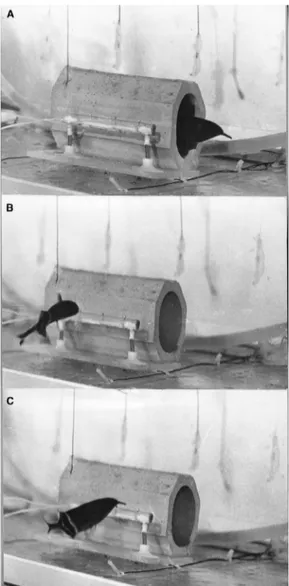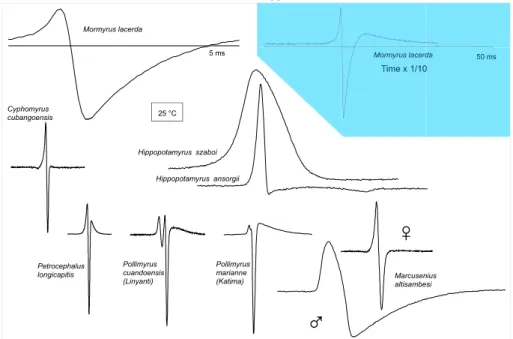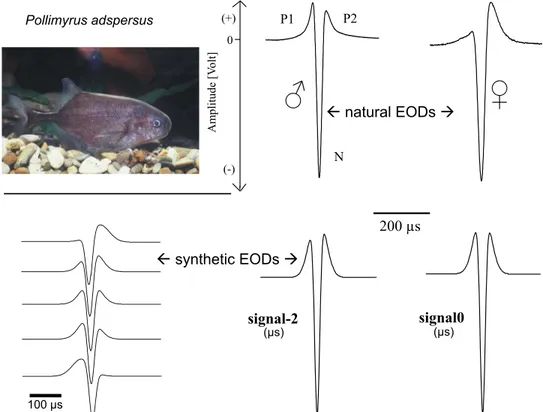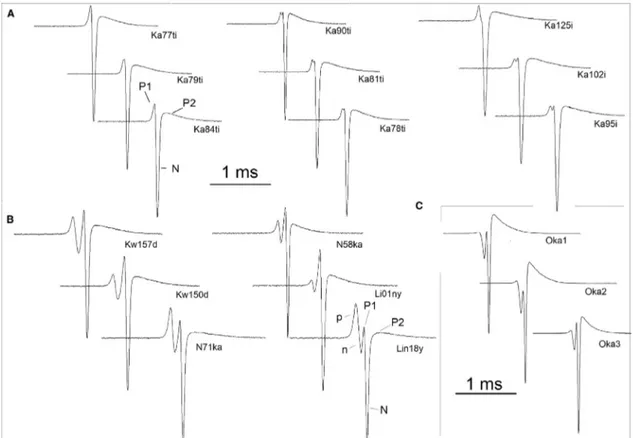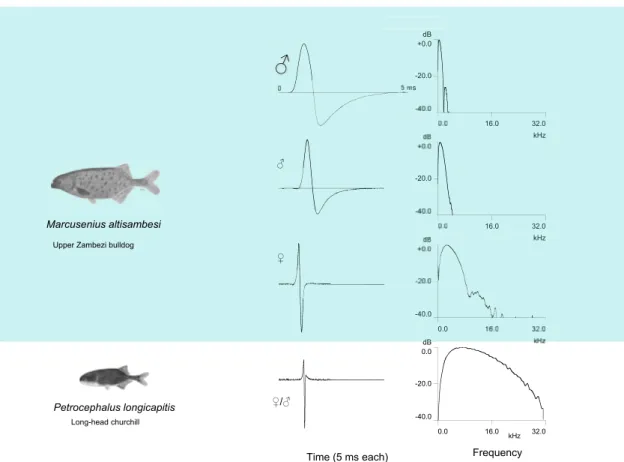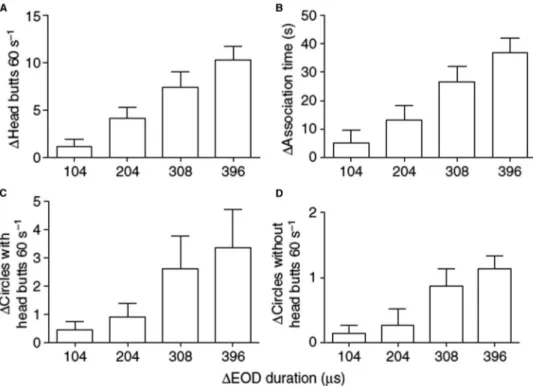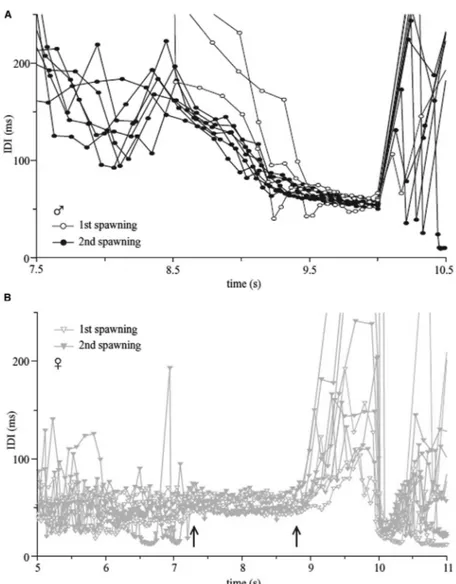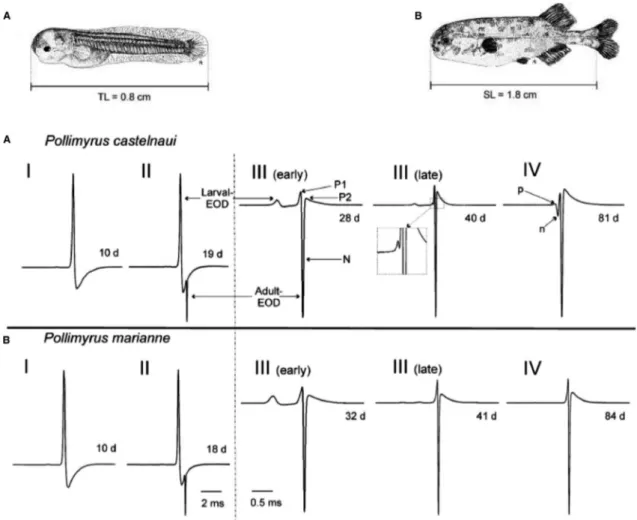Provided for non-commercial research and educational use.
Not for reproduction, distribution or commercial use.
This article was originally published in The Senses: A Comprehensive Reference, published by Elsevier, and the attached copy is provided by Elsevier for the author's benefit and for the benefit of the author's institution, for non-commercial research and
educational use including without limitation use in instruction at your institution, sending it to specific colleagues who you know, and providing a copy to your
institution's administrator.
All other uses, reproduction and distribution, including without limitation commercial reprints, selling or
licensing copies or access, or posting on open internet sites, your personal or institution’s website or repository, are prohibited. For exceptions, permission
may be sought for such use through Elsevier’s permissions site at:
https://www.elsevier.com/about/our-business/policies/copyright/permissions
From Kramer, B., 2020. Communication and Waveform Analysis in Weakly Electric Fishes With Special Emphasis on Mormyrids. In: Fritzsch, B. (Ed.) and Bleckmann, H. (Volume Editor),
The Senses: A Comprehensive Reference, vol. 7. Elsevier, Academic Press, pp.
255–280.
ISBN: 9780128054086
Copyright © 2020 Elsevier Inc. All rights reserved.
Academic Press
7.15 Communication and Waveform Analysis in Weakly Electric Fishes With Special Emphasis on Mormyrids
Bernd Kramer, University of Regensburg, Regensburg, Germany
© 2020 Elsevier Inc. All rights reserved.
7.15.1 Abstract 255
7.15.2 Lissmann ’ s Discovery 256
7.15.3 The Question of Electro-Communication 257
7.15.4 Is Electrosensory Discrimination Good Enough for Communication? 258
7.15.5 Evolution of EOD Waveform in a Hybrid Species Complex 261
7.15.6 Species Recognition by IDI Pattern in Mormyrids? 263
7.15.7 Marcusenius: Sexually Dimorphic EODs 263
7.15.8 Not Only Females are Listening 264
7.15.9 A Weaker Kind of EOD Sex Difference 265
7.15.10 Courtship and Spawning 267
7.15.11 Larval EOD Development 268
7.15.12 Larval Electro-Sensory and -Motor Development 268
7.15.13 Sympatric Specializations in Ecology and Behavior 269
7.15.14 Some Notes on Mormyrid Taxonomy as Relevant to the Present Studies 269
7.15.14.1 Marcusenius Gill, 1862 269
7.15.14.2 Hippopotamyrus Pappenheim, 1906 270
7.15.14.3 Mormyrus Linnaeus, 1758 271
7.15.14.4 Mormyrops Müller, 1843 271
7.15.14.5 Petrocephalus Marcusen, 1854 271
7.15.14.6 Pollimyrus 272
7.15.14.7 Cyphomyrus Myers, 1960 272
7.15.15 Signal Waveform Analysis in a Wave Gymnotiform 272
References 277
Abbreviations AP Action potential
EOD Electric organ discharge FM code, Frequency code modulation HD High discharge rate display (steady state) IDI code Inter-discharge interval code JAR Jamming avoidance response PLA Preferred latency avoidance PLR Preferred latency response SI Sharp frequency increase
SI-HD Sharp frequency increase followed by a steady-state, high discharge rate display
7.15.1 Abstract
The electric sense in fi shes was discovered in the 1950s. African snout fi sh (Mormyridae) and South American knife fi shes (Gymnotiformes) generate electric fi elds for testing their environment by Active Electrolocation, and for communication. These fi shes ’ electric organ discharges (EODs) are species-speci fi c (or – characteristic) pulses or continuous waves, and vary widely in waveform, duration (frequency) and strength. In mormyrids the sequence (or pattern) of pulse intervals carries motivational and species-speci fi c information. In a natural hybrid species complex, choosy females of the parent species block a speciation reversal by their preference for conspeci fi c EOD waveforms, and rejection of the hybrid form. Electrosensory discrimination thresholds appear adapted to the fi ne detail of the EOD pulse waveforms on a m s-scale, with spectral cues not required in Pollimyrus adspersus. In some mormyrid species, breeding males add a strong D.C. component to their EOD, which attracts females but also
255
, Taverne 1971
low-frequency sensitive cat fi sh predators. In several species, speci fi c EOD patterns, as well as loud vocalizing, accompany courtship and spawning. The larvaes ’ early EODs of long pulse duration and initially low rate is replaced by an adult short EOD in young juveniles; parental care is present in Pollimyrus species. Three syntopic species gave examples of con fl ictual and cooperative electrocommunication in a semi-natural environment. Eigenmannia, a wave gymnotiform fi sh, is highly phase sensitive to stimuli of 0 Hz frequency difference, which evoke a Jamming Avoidance Response (which is a frequency shift away from the stimulus). The strength of the JAR depends on the phase difference stimulus to EOD. At a suf fi cient frequency difference, trained, food-rewarded Eigenmannia discriminate waveforms by a temporal mechanism that does not require spectral cues. Eigenmannia is incapable of discriminating stimuli that are phase-locked at maintained frequency identity.
7.15.2 Lissmann’s Discovery
The young zoologist Hans W. Lissmann (1909 – 95) obtained his doctorate of Hamburg University in 1932. He had studied the behavior of Siamese fi ghting fi shes in the Institut für Umweltforschung directed by Jacob von Uexküll, and was desperately looking for a job outside Nazi Germany (Alexander, 1996). At the University of Cambridge, he became aware of the weak electric signals generated by a specimen of the tropical African freshwater fi sh Gymnarchus niloticus. He wondered what the function of the signals might be (Lissmann, 1951). The signals were continuous sinusoidal waves of constant amplitude and frequency (300 Hz), and clearly too weak for stunning prey or warding off predators, two functions known for the strong-electric South American electric eel, Electrophorus electricus, that can emit volleys of powerful electric shocks. Both species are big and dangerous freshwater predators in tropical rivers and lakes. The reports of European explorers, such as Alexander von Humboldt, had made the electric eel famous since the 18th century.
Through his studies of Gymnarchus, Lissmann discovered the electric sense of fi shes, and in 1954 he was elected a Fellow of the Royal Society. With ingenious experiments, Lissmann demonstrated the sensory function of G. niloticus ’ weak electric discharges in a new sensory feat for an aquatic vertebrate, Active Electrolocation, even before the sensory organs, electroreceptors, were known. By Active Electrolocation, G. niloticus detects live organisms or dead matter as impedance inhomogeneities of its self-generated electric fi eld according to an object ’ s conductivity, even at night, or in muddy water, and with the prey not even noticing (Lissmann, 1958).
This discovery entailed light on the biology of G. niloticus. G. niloticus has three kinds of electroreceptor organs with exceedingly high absolute or relative sensitivity. The organs detect the self-generated electric fi eld. G. niloticus ’ brain is of enormous size, capable of integrating the electrosensory input of its lateral line nerves. These discoveries were soon shown to hold also for the other weakly electric fi shes of Africa, the related Mormyridae (snout fi shes or elephant fi shes), and, by an astounding case of convergent evolution, the only distantly related South American gymnotiform knife fi shes (Fig. 1).
Lissmann ’ s discoveries acted like a starting shot for the study of the structure and function of the electric sensory and motor system of African (osteoglossiform) and South American (gymnotiform) electric fi shes, as well as for the many non-electrogenic, but electroreceptive fi shes (see reviews by Bennett, 1971a,b; Szabo, 1974; Szabo and Fessard, 1974; Grundfest, 1957, Murray, 1974; Bullock, 1982; Bullock and Heiligenberg, 1986; Scheich and Bullock, 1974; and others). These studies focused mainly on the anatomy and physiology of the electric system, but scientists also began to take note of the species diversity of mormyrids and gymnotiforms. Both fi sh groups are among the most speciose endemic taxons of their respective continents.
Figure 1 Electric organ discharges (EODs) recorded from an African mormyrid (top) and a South American gymnotiform electric fi sh (below). All African mormyrids generate EODs in pulse form, most gymnotiforms in wave form. The unique African Gymnarchius niloticus generates a wave EOD.
Left diagrams are oscillograms (amplitude over time), right diagrams, amplitude over frequency in kHz. In these Fourier amplitude spectra,
amplitudes are expressed as dB attenuation relative to the strongest spectral component of each waveform. Note pulse EODs occupy little space in
the time domain (left) compared to the frequency domain (right), and vice versa for wave EODs. From Kramer, B., 1990. Electrocommunication in
Teleost Fishes: Behavior and Experiments. Springer-Verlag, Berlin, modi fi ed.
From the beginning, Lissmann wondered about the possibility of electric communication in G. niloticus and mormyrids.
Accidental observations such as Szabo ’ s fi rst permanent recording of electrical interaction in a captive, heterospeci fi c pair of the mormyrid genus Mormyrops strengthened the communication hypothesis (Szabo in Lissmann, 1961). However, the question was how to prove this hypothesis? In a time when equipment such as computers, videorecorders, instrument tape recorders and digital storage oscilloscopes were either not available or not affordable. In addition, leading authorities of the humanities were skeptical of true communication in animals that – in their opinion - demands a cognitive level only present in the human. Even the ethologist Niko Tinbergen shied away from using the word communication in his famous textbook ‘ The study of instinct ’ that set the tone for years to come, and saw many reprints (Tinbergen, 1951). Therefore, the fi rst tentative studies discussing communication in electric fi sh usually put the word ‘ communication ’ in quotation marks, to show that the author was aware of the critical discussion. ‘ The question of animal awareness ’ , the title of Donald Grif fi n ’ s groundbreaking book published 1976, helped to open minds regarding cognition in animals. The discoverer of echolocation in bats was a respected representative of the exact sciences and not known to publish unwarranted coffee-table talk.
7.15.3 The Question of Electro-Communication
The fi rst dedicated experiment clearly supporting ‘ communication ’ showed electric organ discharge (EOD) rate changes when the experimenter slowly moved one snout fi sh, sitting in a horizontally movable porous pot at one end of a long aquarium, toward a stationary specimen at the other end. By this method, the authors determined response distance (Moller and Bauer, 1973), and, in an improved design, assumed detection distance, by the EOD rate changes (startle responses) one or both fi sh displayed (Squire and Moller, 1982; Szabo and Moller, 1984). The experimental design aimed to exclude all stimuli except electrosensory ones, such as visual (the presence of widespread vocalizations among mormyrids had not yet been discovered). The title of the paper kept the quotation marks around the word ‘ communication ’ , probably because the experiment gave no hint about what – or if at all - the two fi sh had been chatting; hence, whether communication as we understand it had occurred.
Freely ranging mormyrids in aquaria gave Sharp Increases in discharge rate (SI), usually followed either by a Decrease to the resting level (SID), or by a steady-state High Discharge (HD) rate display (in combination, an SI-HD), that accompanied intense aggressive and Lateral Display (LD) behaviors. The observation of intricate EOD latency-coupling behaviors on the millisecond- level among pairs of mormyrids further supported a communication function of the EOD (Bauer and Kramer, 1974; Bell et al., 1974; Kramer, 1974; Lücker and Kramer, 1981). The EOD has a social cohesion function in a group-living mormyrid (with possible vocalizations not excluded; Moller, 1976). Also in the gymnotiforms observations and recordings suggesting electrical communi- cation were made (Black-Cleworth, 1970; Hopkins, 1972, 1974a,b,c; Westby, 1974, 1975a,b,c) (Fig. 2).
In order to exclude all but electrosensory stimuli, and so to fi rmly establish electrocommunication, playback experiments were called for. They aimed to shed light on the potential signal value of a display. Prerecorded high discharge rate sequences, when played back to a resident Gnathonemus petersii via an electric dipole decoy, proved highly ef fi cient in evoking full threat, attack and lateral display behaviors aimed at the decoy. The decoy was a short plastic rod fi tted with silver ball electrodes to generate an electric fi eld geometry similar to that of a conspeci fi c. In spite of the decoy bearing no physical resemblance to a fi sh, the exper- imental subject responded to it as if it were a conspeci fi c (even in daylight, and only when the decoy was electrically active).
Figure 2 Aggression and stereotyped, concurrent EOD activity in a resident Gnathonemus petersii (with barble, left in inset image b) directed at an
intruding Mormyrus rume (both mormyrids). Inset images drawn from a video fi lm, with the scene seen from the side and from below. Abscissa, time
in seconds, ordinate, inter-discharge interval (IDI) in milliseconds. Each dot is one interval, connected by lines to show trends. Note a Sharp Increase
in EOD rate (SI) between letters c and f, which is the moment of head butt, followed by a steady-state, high discharge rate at two levels (HD, ending
at letter o). Tick marks on scale of inset images, 5 cm. Highest discharge rate (also for the species) is about 125 Hz, corresponding to inter - EOD
intervals of 8 ms. Fully documented in Kramer and Bauer (1976).
Playback of a discharge sequence recorded from a solitary, resting specimen evoked much weaker responses, such as repeated ‘ inten- tion movements ’ to leave its daytime shelter, accompanied by brief and moderate discharge rate increases followed by a decrease to the resting level (SIDs, Kramer, 1979) (Fig. 3).
So far, these studies had documented discharge rate displays accompanying diverse overt behaviors, and their effectiveness to evoke behavioral responses when played back to a receiver fi sh in the absence of all other stimuli: visual, mechanical, auditory, olfactory. Hence, the existence of an electrical communication channel using discharge rates (or inter-discharge interval patterns, IDI) in so-called pulse fi sh was real. Further study showed that certain IDI patterns observed in several mormyrid species mediated threat and aggression, species recognition, courtship and spawning behaviors (e.g., Bratton and Kramer, 1989; Kramer and Lücker, 1990; Kramer and Kuhn, 1994; Werneyer and Kramer, 2005; Baier and Kramer, 2007). In so-called wave gymnotiforms, the commu- nication signals consisted of frequency modulations, discharge arrests, and sometimes discharging in a form of synchrony, phase- coupling (e.g., Langner and Scheich, 1978). These general conclusions also held for the EOD interactions observed during threat and aggression, courtship and spawning in several gymnotiform species.
7.15.4 Is Electrosensory Discrimination Good Enough for Communication?
How well do fi sh discriminate pulse rates, or IDI patterns? The discrimination limen of trained, food-rewarded P. adspersus for constant pulse rates of around 20 s
1was 2%, even when pulse trains were presented separately (well spaced in succession,
Figure 3 Motor responses of G. petersii on pIay-backs of social signals via a dipole. A dipole with three silver ball electrodes mounted on
a Plexiglas rod generated an electric fi eld slightly head-tail asymmetric similar to that of a conspeci fi c. (A) Startle responses were observed
signi fi cantly more often during stimulation with an attack pattern (one of these shown in Fig. 2) compared with a rest pattern. A startle response was
a rapid forward and backward movement during which the fi sh never totally left its porous-pot hiding-place (B) Attack responses on the dipole model
were observed signi fi cantly more often during stimulation with the attack pattern. (C) In many instances a Lateral Display accompanied by a high
discharge rate followed the attack responses in the same manner as observed during social behavior. Photos, Kramer, B., 1979. Electric and motor
responses of the weakly electric fi sh, Gnathonemus petersii (Mormyridae), to play-back of social signals. Behav. Ecol. Sociobiol. 6, 67 – 79.
akin to a test for perfect pitch). This is in the best range for humans when acoustic clicks are played to selected individuals in their twenties (Kramer and Heinrich, 1990). The frequency discrimination limen for Eigenmannia, a wave gymnotiform, was only 0.2%
for sine wave stimuli of up to four times its own EOD frequency, when tested with alternating frequency bursts. This value is similar to the best ones reported in the human for auditory stimuli, presented in a similar way. These data show that the sensitivity for stimuli following either an IDI code (mormyrids) or an FM code (gymnotiform wave fi sh) is exceedingly high. The resting EOD frequency of wave gymnotiforms is so stable (standard deviation, 0.01% over 1000 EOD cycles, or even lower) that even small frequency changes stand clearly out (Bullock, 1969; Bullock et al., 1975; Kramer, 1987). With these conclusions con fi rmed, did we know all that was to know about the mechanisms of electrocommunication in these fi sh? No, we certainly did not.
There is also the great waveform diversity of the EOD pulse itself, especially in mormyrids, and of continuous wave signals in apteronotid gymnotiforms (Kramer et al., 1981; Albert and Crampton, 2005; Hopkins, 1981; Kramer, 2019). Already early students of electric fi sh, such as Bennett (1971a), had observed and documented some of the great species diversity of EOD pulse waveforms in mormyrids and gymnotiforms, as well as of waveforms in certain wave gymnotiforms. This diversity was astounding and became the object of much interest, both proximate (mechanism) and ultimate (function) (Fig. 4).
The basic mechanism of EOD pulse generation is the same for all pulse and many wave species, the action potential (AP) of a skeletal muscle cell (exception: apteronotids). Bennett (1971a) elucidated the mechanisms of how the electric organ (mormyrid and gymnotiform) may generate different, often species-speci fi c or -characteristic, pulse waveforms. An electric organ whose non- innervated, opposite electrocyte faces are not electrically excitable generates a monopolar, usually head-positive EOD pulse of a waveform similar to an AP (such as found in all strong-electric fi shes like Electrophorus, but also in some mormyrids such as Hippopotamyrus szaboi, Mormyrus tenuirostris). In the organs of other weakly electric fi sh the neurochemically evoked AP of the innervated electrocyte face triggers electrically an AP of the opposite cell face, which is of reversed polarity and occurs at a short delay, resulting in a bipolar EOD resembling a single-cycle sinusoid. Consequently, this mechanism reduces both EOD peak amplitude and spectral low-frequency content (for example, G. petersii). Still other mormyrids, such as P. adspersus, generate a tripha- sic EOD where the electrically evoked AP of the opposite electrocyte face not only is delayed relative to the AP of the innervated face, but also much shorter and stronger, and (of course) opposite polarity. In still other mormyrids the stalks of the electrocytes (that are contacted by the motoneurons; Bennett, 1971a) contribute notably to the EOD waveform by additional, small potentials, as, for example, seen in the pentaphasic EOD waveform of Pollimyrus castelnaui. These stalks vary in an amazing degree of complexity among species (Bass, 1986). In gymnotiform pulse species, small additional electric organs at various locations in the body modify the externally measured EOD waveform as generated by the long main organ, such as in Gymnotus carapo (for review, see Bass, 1986) or Brachyhypopomus beebei (see Stoddard and Markham, 2008 for possible functions in the near fi eld).
Gymnotiform wave species are either monotonous in waveform, varying just in species-characteristic frequency ranges and harmonic distortion, whereas the phase relationships among harmonics remain the same throughout the sternopgygids (as far as they are known). The EOD waveforms of apteronotids, however, vary so much among species they appear to be free from constraints. In addition to varying in frequency range and harmonic distortion, apteronotid waveforms are of almost any conceiv- able shape within physiological limits. Their secret lies in an ontogenetic difference compared to sternopygids: the myogenic larval
Figure 4 Several mormyrid species ’ EODs from the Upper Zambezi – Linyanti River community of mormyrid fi shes, drawn to scale. Background in
color: to show the extra-long EOD of Mormyrus lacerda at a time scale compressed by a factor of 10. The EOD of Marcusenius altisambesi is sexually
dimorphic in local summer, when males develop a long discharge that recedes to the female discharge in winter. Head-positivity is upwards, zero
lines ¼ time bars. Kramer, B., 1996. Electroreception and Communication in Fishes. Gustav Fischer Verlag, Stuttgart, Jena, Lübeck, Ulm, updated.
electric organ (Kirschbaum, 1983) of apteronotids soon degenerates and is replaced by a neurogenic organ that persists in adult- hood (de Oliveira-Castro, 1955; Bennett, 1971a). The neurogenic organ affords the Apteronotidae waveforms of a higher frequency, of greater harmonic distortion, and great fl exibility regarding the phase relationships among the constituent harmonics, resulting in a multitude of EOD waveforms (Kramer, 2019). The comparison of waveform diversity in mormyrids and apteronotids, and how it is achieved, shows that evolution can fi nd similar solutions - species-speci fi c EOD waveform diversity - by totally different means. It also shows once again that the convergent evolution of weakly electric African and South American fi sh was quite independent.
What are the selection pressures that underlie the evolution of all this complication? Do fi sh sense these fast EOD potential changes and elaborate waveforms that are often much shorter than an AP (for the pulse EODs) in the fi rst place? For a stable wave- form display of EODs, the human needs a triggerable oscilloscope, which was not available before about 1943, just in time for Hans Lissmann to observe the discharges of G. niloticus in his Cambridge laboratory in 1949. Do fi sh possess the equivalent of an oscilloscope?
Expecting failure, we trained several P. adspersus to discriminate between playbacks of a short, triphasic EOD, pre-recorded from a conspeci fi c, and the somewhat longer, biphasic EOD of G. petersii. One stimulus was food-rewarded, the other not (we also used the two species with reversed roles). To our surprise, the experimental subjects of both species showed us this task was easy. We therefore tested whether the P. adspersus discriminated among different conspeci fi c EODs, pre-recorded from different individuals, and presented pairwise. The experimental subjects mastered even this more dif fi cult task, in spite of the similarity of conspeci fi c EODs. This result supports the assumption of individual recognition by EOD pulse waveform, which appears adaptive given the long nocturnal courtship and fractional spawning behavior of P. adspersus. Pair partners join and separate dozens of time over many hours in a spawning night, and the highly aggressive male looks out for egg and larvae eaters, such as other females. He collects the eggs from the last visit of the female or (if present) straying larvae in his mouth and transports them to his nest (Kirsch- baum, 1987; Bratton and Kramer, 1989; Baier et al., 2006).
In these experiments, successful EOD pulse discrimination was independent of stimulus amplitude, which supports categorical discrimination (Graff and Kramer, 1992). We did not yet know, however, whether the fi sh discriminated the stimuli by their differ- ences in spectral composition (a short pulse is higher pitched than a long one) or by waveform (such as displayed on an oscillo- scope). Natural P. adspersus EODs resemble each other, but are not identical and vary in several variables simultaneously. Therefore, we decided to use synthetic EODs the characteristics of which we could control.
Two superimposed Gaussians are suf fi cient to model mathematically the intraspeci fi c variation of P. adspersus ’ triphasic EOD waveform by varying three variables (Westby, 1984). One Gaussian mimicks the neurochemically evoked summed APs of the inner- vated posterior electrocyte faces, giving rise to a head-positive potential P (of 150 – 250 m s duration in our P. adspersus laboratory population). The other Gaussian represents the electrically evoked APs of the opposite, non-innervated cell faces that give rise to the strong and short N phase of opposite polarity, and less than 50 m s duration. In the mathematical model, the standard deviations of the Gaussians are wide for the former and narrow for the latter, which is also of threefold strength and subtracted from the former.
When both Gaussian peaks coincide in time, the two head-positive P peaks of the EOD, P1 and P2, are of equal strength. The P1/P2 amplitude ratio is one in this case; it decreases by advancing the N phase and increases by delaying the N phase. The natural vari- ation of the P1/P2 ratio was 0.04 (weak P1, strong P2) to 3.33 (strong P1, weak P2; N ¼ 24) in our sample of P. adspersus. We used Westby ’ s mathematical model to generate synthetic EODs for playback experiments, with variables adjusted to meet the center of the natural variation. Data points of the discrete functions were separated by 2 m s as required by the programmable D/A converter (Kramer and Weymann, 1987) (Fig. 5).
We trained seven P. adspersus to leave their daytime shelter to receive a food reward at the opposite side of the aquarium, when- ever an electric fi sh decoy, a dipole, played back the S þ (rewarded stimulus), a symmetrical synthetic waveform termed signal0. The zero indicates temporal coincidence of the two Gaussian peaks. A fi sh aiming for a reward when the alternative waveform, S e (unre- warded stimulus), was played back, was discouraged to continue approaching the reward station by a few air bubbles injected in its path. Initially, for an S e we chose a great difference from signal0 to facilitate the learning of the two stimulus types, only one of which – signal0 - was rewarded. In these S e stimuli, the N phase was advanced or delayed by 30 m s. All experimental subjects learned to discriminate between the S þ and the S e by this method of conditioned discrimination. Stepwise, we made the S e more similar to the S þ by reducing the temporal displacement of its N-Gaussian peak from its P-Gaussian peak. The trained fi sh still detected an advance or delay of the N phase in the S e by 2 m s (N ¼ 2), 6 m s (N ¼ 1), and 10 m s (N ¼ 2). The two most sensitive fi sh with the best values were unable to detect a 1 m s shift of the N phase, however (Paintner and Kramer, 2003).
Even the most similar stimulus pair that were still discriminated by two of our fi sh, signal0 and signal-2, differed in their spectral amplitude distributions, that is, in perceived pitch (however little). Therefore, the question whether fi sh discriminate different wave- forms based on a spectral or rather temporal sensory mechanism was still open at this point. We tested three experimental subjects whether they discriminated among stimuli of identical amplitude spectra but different waveforms (hence, different phase spectra).
We used signal þ 10 as an S þ and signal 10 as an S . All fi sh discriminated between these stimuli after only short training. In an additional test series, we contrasted signal þ 8 to signal 8 and obtained the same result. Therefore, we conclude that P. adspersus use a temporal sensory mechanism of discrimination, one that can detect waveform differences even when spectral cues are not avail- able. We have not yet discovered the fi shes ’ ‘ oscilloscope ’ (Paintner and Kramer, 2003).
A communication signal that encodes individual identity (as in P. adspersus ’ EOD) is useful depending on its reach. We tested
P. adspersus ’ discrimination faculty for its reach in an aquarium of 2.4 m length, using signal þ 8 as an S þ and signal 8 as an S .
Starting at a stimulus- fi sh distance of 30 cm that we increased by 5-cm steps, we found that the spatial discrimination limit is at
about 130 cm (at 4.9 m V/cm fi eld strength and 100 m S/cm water conductivity). This reach is similar to the detection threshold deter-
mined by a spontaneous EOD rate increase (SI), a startle response, in another somewhat larger mormyrid, Brienomyrus niger (Squire
and Moller, 1982; Moller et al., 1989). P. adspersus, as tested here, not only detects the presence of an approaching intruder but also
its identity at a distance. We conclude it is the Knollenorgane rather than the Mormyromast organs that mediate this sensory feat, because of the great difference in sensitivity between the two receptor systems. We proposed a mechanism of differential neural coding of P. adspersus EODs based on the rate of voltage change and the known response properties of Knollenorgane (Bell, 1989; Bell and Grant, 1989; Hopkins and Bass, 1981). We have not been able to test it (Paintner and Kramer, 2003; see also Hopkins and Bass, 1981 for a similar suggestion for another EOD waveform).
The EOD waveforms of P. adspersus males and females differ signi fi cantly in P1/P2 ratio, suggesting its usefulness to identify sex partners in courtship and spawning (Westby and Kirschbaum, 1982). However, in males the average P1/P2 was < 1, in females P1/
P2 > 1 (N ¼ 10 for males, N ¼ 14 for females; Bratton and Kramer, 1988), there was extensive overlapping of statistical distribu- tions. We concluded Westby and Kirschbaum ’ s (1982) method of sexing their P. adspersus was unreliable. Sex partners have success- fully spawned in our lab, in spite of a female ’ s EODs showing the ‘ wrong ’ type of P1/P2 ratio. We therefore believe the variation of P1/P2 ratio supports individual identi fi cation rather than sex recognition. The sex difference in P1/P2 may be due to the anabolic effect of androgens such as testosterone, yielding a stronger electric organ in males (cf. Bass et al., 1986). The stronger P phase current in a male organ would trigger the N phase earlier in relation to the P peak than in females. A female ready to spawn recog- nizes a male by his loud advertising vocalizations and his conspicuous, highly aggressive patrolling behavior around his nest area. In addition, there is a sex difference in EOD echoing, or phase-coupling, behavior: males exhibit a PLR (Preferred Latency Response), females a PLA (Preferred Latency Avoidance; Kramer, 1978; Lücker and Kramer, 1981). Therefore, the individual variation in P. adspersus ’ EOD waveform may not result from sexual selection, in spite of its statistical signi fi cance. In some other species, exam- ples of sexually selected sex differences in EOD waveform do exist (see further below).
7.15.5 Evolution of EOD Waveform in a Hybrid Species Complex
The sibling species complex of three dwarf stonebasher species of the Okavango-Zambezi system in Namibia and Botswana, which are so similar that they are hard to tell apart, gives an instructive example for the evolution of these fi shes ’ electric communication system. The dwarf stonebasher, P. castelnaui, inhabits the Okavango, has a pentaphasic EOD waveform, usually 12 scales around the caudal peduncle and represents – according to the cytochrome b gene tree - the basal clade. Both the Zambezi dwarf stonebasher, Pollimyrus marianne, and the Kwando dwarf stonebasher, Pollimyrus cuandoensis, are derived from P. castelnaui (Kramer et al. 2003, 2014). P. marianne exhibits a triphasic EOD waveform and usually 16 scales around the caudal peduncle, whereas P. cuandoensis is
P1 P2
N 0
(-) (+)
Am plitude [V olt]
signal-2
200 μs
signal0 Pollimyrus adspersus
Å synthetic EODs Æ
100 μs
(μs) (μs)
♂ ♀
Å natural EODs Æ
Figure 5 EOD waveform discrimination in Pollimyrus adspersus. Top panel, natural EODs showing a tendency for a sex difference, which are examples for broadly overlapping distributions. Note time bar of 200 m s. Lower panels, left: ‘ synthetic ’ EOD waveforms, calculated by subtracting a narrow, strong Gaussian from a broader positive one, at different displacement times between the Gaussian peaks (from 30 to þ 30 m s, zero being coincidence). Lower right panel, the two most similar stimulus waveforms between which two experimental subjects still discriminated in a conditioned choice test. The waveforms differ by a 2 m s shift of the inverted Gaussian relative to the positive one. Paintner, S., Kramer, B., 2003.
Electrosensory basis for individual recognition in a weakly electric, mormyrid fi sh, Pollimyrus adspersus (Günther, 1866). Behav. Ecol. Sociobiol. 55,
197 – 208, modi fi ed.
intermediate, both with its usually 14 scales and an EOD waveform combining elements of both other species at great variability.
P. cuandoensis inhabits the smaller Kwando River that runs in parallel to and in-between both major rivers at equal distance, the Okavango in the west and the Zambezi in the east. The Kwando is a tributary to the Zambezi by the connecting Chobe but has tenuous links also to the Okavango (Fig. 6).
Whereas in P. adspersus the stalks piercing the electrocytes do not electrically contribute (less than 1/500th, Westby, 1984; Teugels and Hopkins, 1998), this is obviously different in P. castelnaui and P. cuandoensis. Markowski et al. (2008) generated P. castelnaui ’ s pentaphasic EOD waveform mathematically by adding a third electrical activity (as a Gaussian) to Westby ’ s (1984) mathematical model for P. adspersus ’ EOD waveform. The extended model was capable of generating all individually varying P. castelnaui EODs tested at a near-perfect fi t, by adjusting amplitudes, duration and relative delay times for the three successive electrical excitations. It was also capable of generating the triphasic Zambezi waveform of P. marianne by small parameter changes, including individual Zambezi stonebasher waveforms with small dents or slope changes in its P phase.
Both Okavango (2 out of 8) and Zambezi (4 out of 4) dwarf stonebashers showed signi fi cant spontaneous preference for their own species ’ playback EODs in a T maze test without reward nor punishment. Not a single specimen showed the opposite prefer- ence (Markowski et al., 2008). The common ancestor of both dwarf stonebasher species in the two main rivers may already have had a pentaphasic EOD that was simpli fi ed to a triphasic one when the Zambezi dwarf stonebasher differentiated from the Okavango dwarf stonebasher. In both species ’ larvae the emerging adult EOD waveforms are identical until about day 40, when only in Oka- vango larvae an additional electrical excitation, corresponding to the third Gaussian in the model, emerges (Baier et al., 2006).
Based on the maternal cytochrome b evidence, P. cuandoensis was recognized as a hybrid species with unidirectional origin and an intermediate phenotype, and P. marianne as the ‘ mother ’ species and P. castelnaui the ‘ father ’ species (following the terminology of Wirtz, 1999). The three species form a monophyletic clade, with P. castelnaui sister to the other two species (Kramer et al. 2003, 2014). Why does this three-sibling complex not collapse back again to a single species, a reversal of speciation? Conditions for such a scenario seem to be met: there is a hybrid species (P. cuandoensis) in a contact zone with occasional access to both parent species, by the Zambezi ’ s seasonal fl ooding the terminal sections of the Kwando River (Chobe) from the east, and the Selinda (Magwegqana) spillway from the Okavango in the west. The choosy females of the two parent species block a speciation reversal, as suggested by spontaneous preference choice tests in the laboratory. Both parent species ’ females (P. castelnaui, N ¼ 4 out of 5; P. marianne, N ¼ 5 out of 5) discriminated against the EODs of P. cuandoensis males (N ¼ 6), apparently because of their ‘ shaggy ’ , EOD waveforms that combine features of both parent species ’ EODs in a way to resemble neither, at great variability among individuals. The single
Figure 6 Three species of dwarf stonebashers from Namibia/Botswana, fi eld-recorded. (A) Pollimyrus marianne, inhabiting the Upper Zambezi River.
(B) P. cuandoensis, inhabiting the Kwando River. (C) P. castelnaui, inhabiting the Okavango River and delta. P. cuandoensis is a hybrid form of the two
other species. The EOD of P. cuandoensis combines elements of the two parent species ’ EODs at great variability, in a way found in neither. Kramer,
B., Van der Bank, H., Flint, N., Sauer-Gürth, H., Wink, M., 2003. Evidence for parapatric speciation in the mormyrid fi sh, Pollimyrus castelnaui
(Boulenger, 1911), from the Okavango - upper Zambezi River systems: P. marianne sp. nov., de fi ned by electric organ discharges, morphology and
genetics. Environ. Biol. Fish. 67, 47 – 70, modi fi ed.
P. cuandoensis female available for the test preferred a Zambezi dwarf stonebasher ’ s EOD to all other EODs presented, including those of her own species (N ¼ 6; Schmid and Kramer, 2014). We have not found evidence for clear sex differences in EOD waveform in the dwarf stonebasher species, except for a very minor one in P. castelnaui ’ s pentaphasic waveform (Markowski et al., 2008). Similar to P. adspersus, only the male dwarf stonebashers (of all three species) vocalize during courtship, defend a nest, patrol the area around the nest, collect and transport the eggs to the nest and tend to the larvae (Baier and Kramer, 2007; Baier et al., 2006).
7.15.6 Species Recognition by IDI Pattern in Mormyrids?
The EOD waveform clearly signals the species identity of an individual dwarf stonebasher, whereas IDI patterns signal its behavioral state that may change at any moment. We studied the question of species speci fi city of IDI patterns in this sibling species complex;
in other words, do they speak the same language? We found great similarity in equivalent IDI patterns between P. castelnaui and P. marianne; not in any one of the behaviors we studied did we fi nd differentiation in associated IDI patterns (Baier and Kramer, 2007). This includes EOD activity during diurnal resting, nocturnal swimming, and territorial agonistic encounters. Not even during courtship and spawning could we fi nd species-speci fi c IDI activity (three pairs of P. marianne, fi ve pairs of P. castelnaui). In contrast, the male ’ s vocal advertising that precedes courtship and spawning did show acoustic species differences among the three dwarf stonebasher species (Lamml and Kramer, 2006). Apparently, the EOD waveform tells a female whether a male is conspeci fi c or not, but the acoustic advertising (in combination with an appropriate IDI activity) appears to be instrumental in a female dwarf stonebasher ’ s choice of a male. In three closely related bulldog species, formerly considered M. macolepidotus, allopatric differenti- ation in sound production during social interaction and reproduction, was also found (Lamml and Kramer, 2007).
Campylomormyrus tamandua and C. rhynchophorus displayed quite similar EOD waveforms but differed clearly in their nighttime swimming IDI patterns in our laboratory. One of four C. rhynchophorus, apparently a male, generated an EOD lasting 3.3 ms, about 20 times longer than that of its conspeci fi cs. Given a choice, the C. rhynchophorus signi fi cantly preferred associating with a fi sh decoy playing back conspeci fi c IDI patterns rather than a C. tamandua pattern. The C. tamandua, however, did not show any preference for neither pattern, perhaps because they were juveniles that join mixed species schools in the wild more easily than the adult C. rhynchophorus we used (Kramer and Kuhn, 1994). The genus Campylomormyrus is of Central African distribution with C. tamandua also widely occurring in West Africa. Our specimens were imported by a tropical fi sh dealer direct from Kinshasa (Zaïre), and originate from an af fl uent of the Stanley Pool, 150 km off Kinshasa. The two species are easily distinguished by external morphology, size and coloration, and do not seem to be nearly so closely related as the P. castelnaui sibling trio. Another small mor- myrid, Petrocephalus bovei, clearly preferred conspeci fi c IDI playback patterns to those of Pollimyrus isidori or B. niger. These three species ’ nighttime swimming patterns were not signi fi cantly different in terms of histograms and mean discharge rates, but differed in terms of the sequence of pulse intervals, as revealed to the human eye and by autocorrelation (Lücker, 1982; Kramer and Lücker, 1990). These results support the notion that with increasing phylogenetic distance (in the latter case, involving three genera), IDI patterns differentiate to become species-speci fi c in addition to situation-speci fi c (Fig. 7).
Why do mormyrids discharge during the diurnal inactivity period in the fi rst place? One reason that is probably valid for most species is group cohesion (Moller, 1976). In daytime, most mormyrids display a variable IDI pattern of low and ‘ irregular ’ pulse rate that is, of a wide range of IDIs, and associated histograms with two or three peaks. In Marcusenius altisambesi, a novel resting IDI pattern serves the male to advertise to females even during the diurnal inactivity period. Male M. altisambesi residing in the center compartment of a large tank usually generate their species ’ version of the variable resting activity of 4 – 12 Hz, characterized by a wide range of IDIs (about 15 – 500 ms), and a broad histogram with two or three peaks. However, when a female replaced a male neighbor, experimental males (N ¼ 4) switched to a regularized IDI pattern (16 – 28 Hz, IDI range 11 – 100 ms, and a single histogram peak). The regularized IDI pattern vanished when – back again - a male replaced the female. The regularized pattern attracted females, as shown by playback preference tests. Six experimental females (in the center compartment of a large tank) had a choice between a dipole gener- ating a variable and a dipole generating a regularized male IDI pattern, at equal distances on either side. Five (of six) females preferred to stay close to the dipole generating the regularized IDI pattern, whereas one female showed the opposite preference (Machnik and Kramer, 2011). How fi sh (both sexes) knew the sex of their neighbors is unknown. It could not be EOD duration because the laboratory-kept males displayed short EODs as in ‘ local winter ’ in the wild, and the dipoles generated short EODs. In this species, both sexes vocalize during courtship (Lamml and Kramer (2007), but this was not monitored in the study. Apart from an advertising function, the males ’ regularized IDI pattern could help advance gonadal recrudescence in the females (see Lehrman, 1963 for ring doves).
7.15.7 Marcusenius: Sexually Dimorphic EODs
Male EODs in most of the southern African Marcusenius species are longer and more variable than female EODs. For example, the
Upper Zambezi bulldog, M. altisambesi that occurs also in the Okavango River, exhibits a seasonal sexual dimorphism in EOD wave-
form (see Fig. 4). Females and juveniles generate short EODs throughout the year (386.9 9.2 m s, N ¼ 47 summer females; 340
3.57 m s, N ¼ 22 winter females), males, however, long EODs – that are long only in summer (2980 330.3 m s, N ¼ 15 summer
males; 334.1 m s 7.55 N ¼ 8, winter males; all at 25
C). Males attaining sexual maturity increase the duration of their EOD up to
4779 m s in a steplike fashion, more than 10 times the female/juvenile average, at a time when the Zambezi and Okavango are in
fl ood and bulldogs breed. Long male discharges occur in summer only (rainy season), not in local winter.
Four of six female M. altisambesi gave stronger spontaneous responses to playbacks of the long EODs of fi eld-recorded ‘ summer males ’ than to short EODs of ‘ winter males ’ . The responses measured or counted were head butts, circling around the fi sh decoy used for playback, and association time close to the dipole decoy. None of these laboratory-kept females was in a clearly reproductive state, and still two-thirds responded to the EODs of breeding males recorded in their home river (Machnik et al., 2010). The observed behaviors were among those that occur in male-female pairs during courtship in this species (Lamml and Kramer, 2007), and were similar to those seen in Marcusenius pongolensis (Werneyer and Kramer, 2005). However, four of seven male exper- imental subjects (57%) responded in the opposite way to females: they avoided the long playback EODs and preferred to associate with the decoy playing short EODs (three individuals responded to neither signal; Machnik et al., 2010). This is evidence for sexual selection of the male long discharge by female choice (intersexual selection), whereas intrasexual selection by male competition seems to be absent in M. altisambesi (Machnik et al., 2010). M. altisambesi breeds on a fl oodplain of a reservoir river, the Upper Zam- bezi, where there is plenty of ( fl ooded) grass and other vegetation, and spawning sites no limiting factor. M. altisambesi do not construct a nest.
7.15.8 Not Only Females are Listening
The question arises what initiated an evolutionary process that led to male pulse lengths that are more than 10 times the length of female/juvenile EODs? The amplitude spectrum of long male discharges is very low-frequency, and EODs were surely stimulating not only the females ’ Knollenorgane, the communication receptors, but also their low-frequency sensitive ampullary organs of extremely low threshold. By comparison with short EODs, the effect of long EODs must be similar to a big thump from a subwoofer in a stereo system, stimulating the females much stronger than ordinary, short EODs. When accentuated male characters differ in strength, females tend to choose the stronger (Ryan and Keddy-Hector, 1992), as con fi rmed in M. altisambesi females stimulated with playback male EODs of varying length (Machnik et al., 2010). Therefore, M. altisambesi males generating the longest EODs likely have the greatest fi tness. However, not only females are listening in the Zambezi and Okavango. Cat fi sh, such as the sharp- tooth cat fi sh, Clarias gariepinus), also detect long male EODs by their ampullary, low-frequency electroreceptor organs, whereas the short juvenile and female EODs were beyond detection threshold (Hanika and Kramer, 2000). Bulldogs, probably mainly males, made up 64% of the stomach contents of 363 dissected cat fi sh in summer, at the time of the spectacular cat fi sh runs in the Oka- vango (Merron, 1993). An equally common snout fi sh, the churchill Petrocephalus catostoma, with a short EOD lacking low
0.0
-20.0
-40.0 dB
0.0 16.0 32.0
kHz pe8fft.B
+0.0
-20.0 dB
16.0 32.0
kHz mm18fft.B
-40.0 0.0 mw8fft.B
s
-20.0
16.0 32.0
kHz mm28ft.B
kHz dB
+0.0
-20.0 dB
16.0 32.0
kHz
-40.0 0.0 s
-20.0
16.0 32.0
kHz
Frequency Time (5 ms each)
Petrocephalus longicapitis ♀/♂
♂
♀
Long-head churchill Upper Zambezi bulldog
Marcusenius altisambesi
